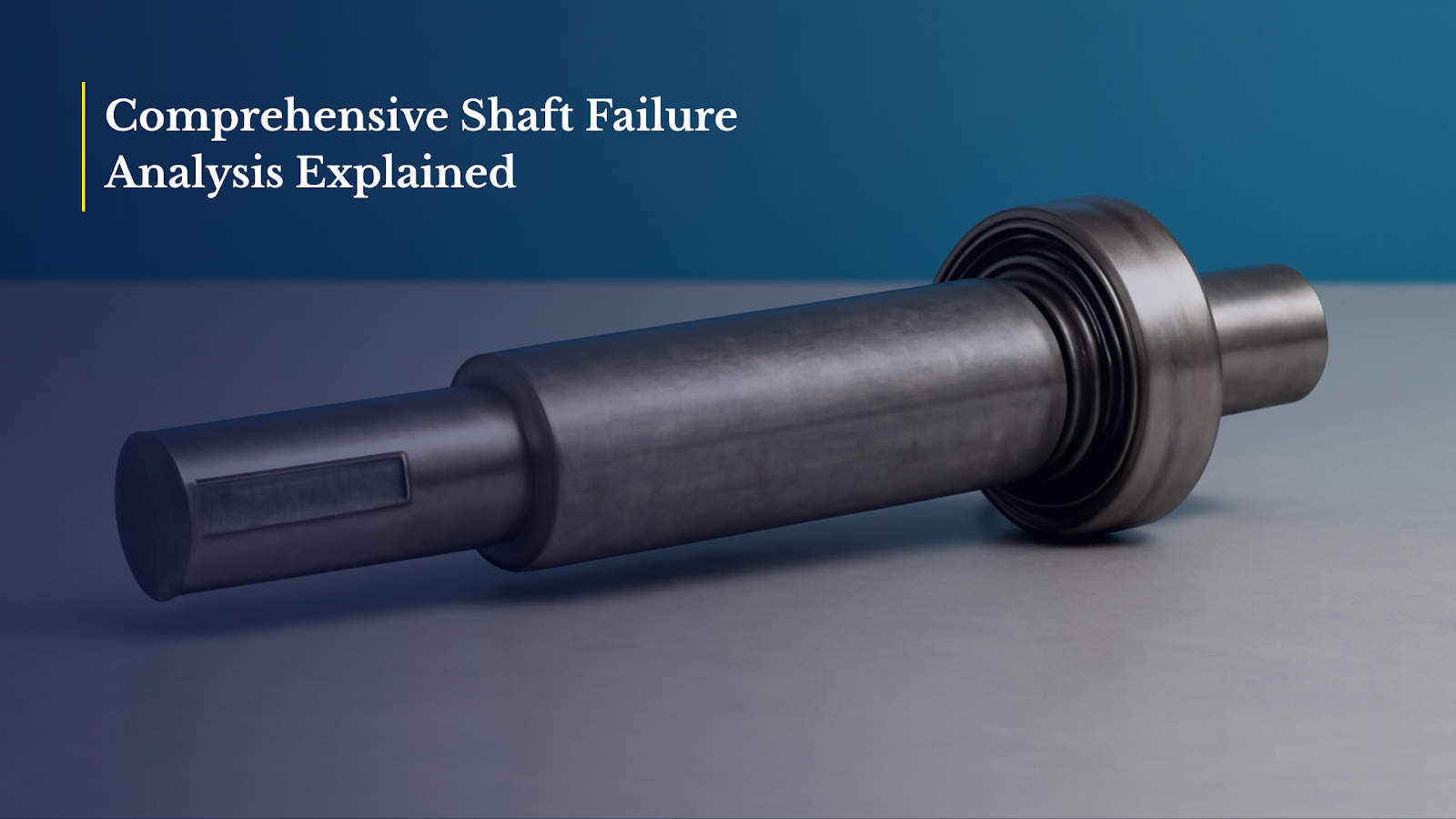Shaft failures in industrial machinery are a common yet costly issue in sectors like chemical processing, oil & gas, pharmaceuticals, water treatment, power generation, and many more. These failures can lead to significant operational downtime, expensive repairs, and safety hazards.
Several key factors contribute to shaft failures, including fatigue, overload, corrosion, misalignment, and wear. Fatigue, the most common failure mechanism, arises from cyclical stresses, while overload failures occur when shafts are subjected to forces beyond their design limits.
In this comprehensive guide, we will explore the various causes of shaft failures in detail and provide solutions to prevent them.
Key Takeaways
- Shaft failures are common in industries relying on rotating machinery, often leading to costly downtime and repairs.
- Fatigue, overload, corrosion, misalignment, and wear are the primary causes of shaft failure.
- Key symptoms of shaft failure include unusual vibrations, excessive noise, temperature rise, and leaks.
- Preventative measures include material selection, regular inspections, and optimizing shaft design to reduce stress concentrations.
- Chemitek’s pump solutions address these issues by using high-quality materials such as 316 stainless steel and FRP, helping mitigate common shaft failure mechanisms.
- Regular maintenance, alignment checks, and vibration monitoring are crucial for preventing shaft failure and improving machinery longevity.
What Is a Shaft and Its Failure Symptoms
A shaft is a cylindrical mechanical component used to transmit rotary motion and torque between machine parts. In pumps, the shaft connects the motor to the impeller, transferring mechanical energy to move fluids. Pump shafts are critical for the operation of pumps, as they endure rotational, torsional, and axial stresses during operation.
The failure of a shaft occurs when it can no longer support the mechanical stress placed on it, leading to a loss of function in machinery.
Key Symptoms of Shaft Failure
Understanding the root causes and early warning signs of shaft failure can significantly reduce downtime and repair costs. To better understand how to prevent shaft failures, it's essential to first examine the common causes behind these issues.
Common Causes of Shaft Failures
Several factors contribute to shaft failures, and understanding them is the first step to preventing these costly issues.
1. Fatigue Failures
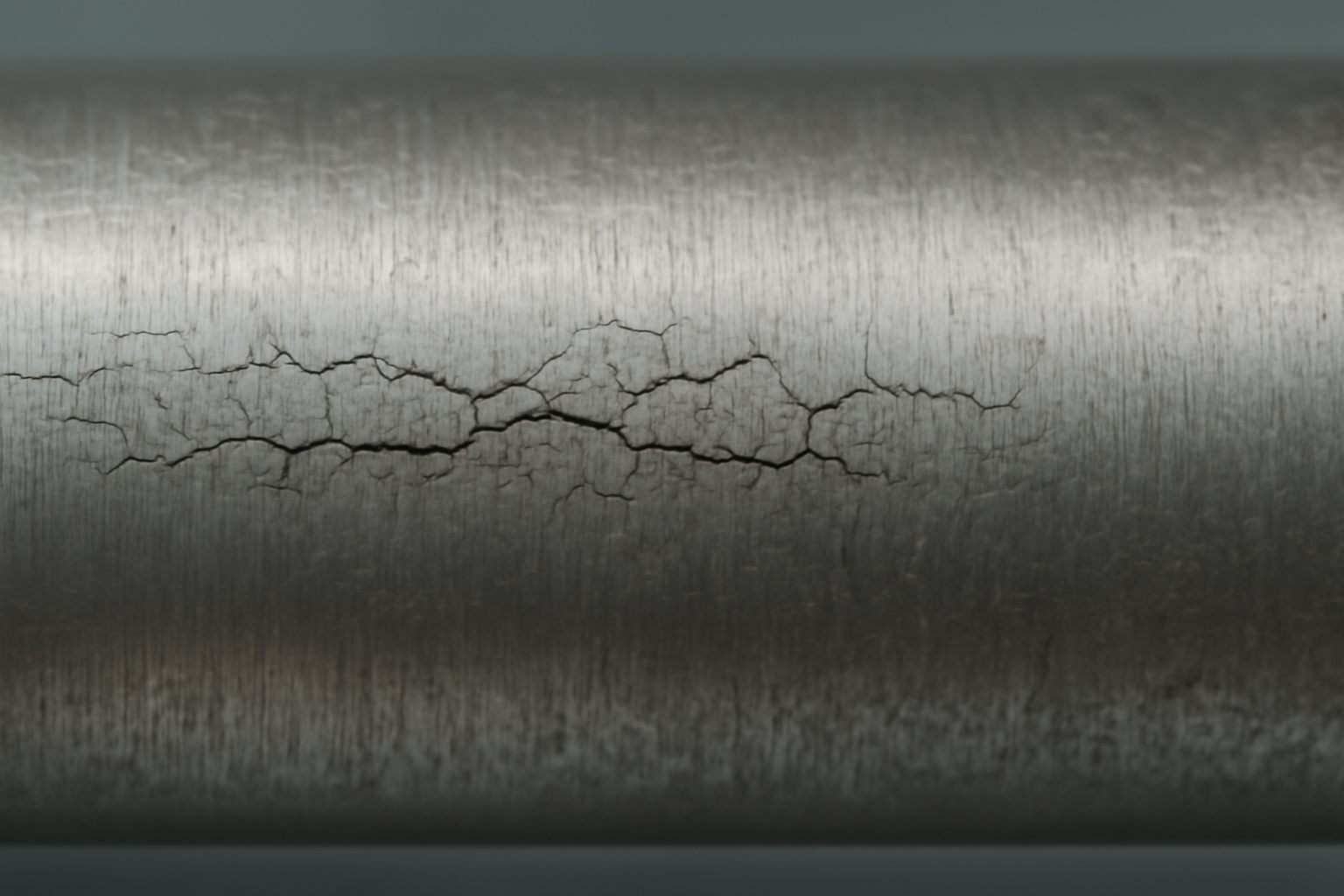
Fatigue is one of the most prevalent causes of shaft failure in industries that rely on rotating machinery, particularly in pumps, compressors, and turbines. Over time, cyclic stresses cause microscopic cracks to form in the shaft material. These cracks propagate, and when they reach a critical size, the shaft fails.
Example: In power generation or water treatment, shafts undergo constant rotational stress, leading to fatigue failure.
Prevention Recommendations:
- Material Selection: Use high-fatigue-resistant materials like alloy steels (e.g., 4140 steel) or stainless steel for applications involving cyclic loading.
- Design Considerations: Avoid sharp transitions like keyways and bearing shoulders by incorporating smooth radii and fillet transitions at critical stress points to reduce stress concentrations.
- Regular Inspections: Perform vibration analysis, ultrasonic testing, and magnetic particle inspection to detect early-stage cracks or signs of fatigue.
2. Overload Failures
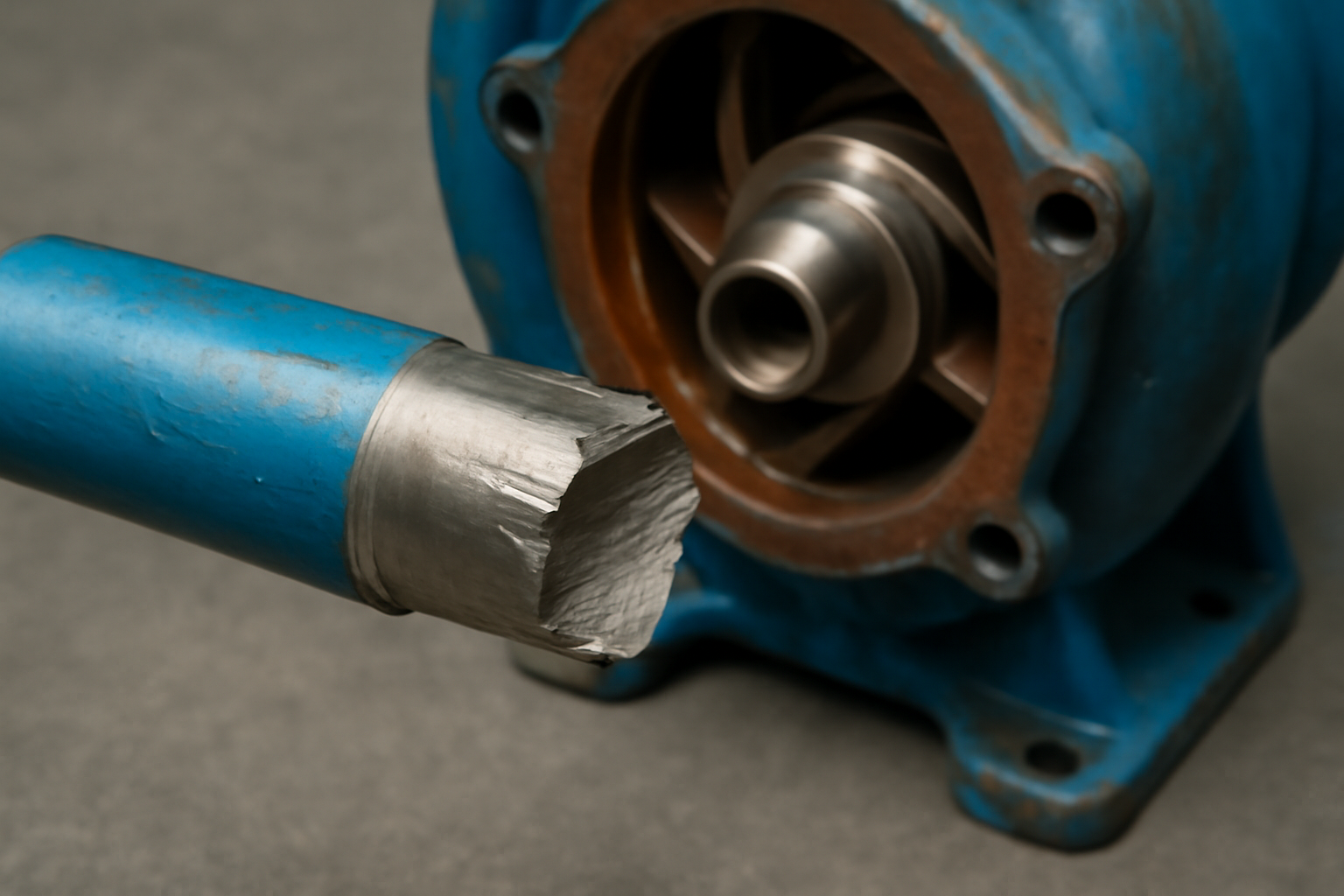
Overload failures occur when the shaft is exposed to forces beyond its rated capacity, such as during sudden torque surges or due to incorrect load handling. This typically happens in industries like chemical processing, food manufacturing, and mining, where pumps and compressors may be exposed to fluctuating or unexpectedly high loads.
Example: In the chemical processing industry, pumps may face an overload condition when the system experiences sudden surges in pressure, leading to failure if the shaft is not designed to handle these extreme loads.
Prevention Recommendations:
- Load Monitoring: Use torque meters or load cells to monitor the load applied to the shaft.
- Material Selection: Use high-tensile strength materials such as chrome-vanadium alloys or high-carbon steels for shafts exposed to high loads.
- Overload Protection: Install safety clutches or torque limiters to prevent overload situations that could lead to shaft failure.
- Design Considerations: Increase shaft diameter in critical areas to accommodate higher loads and ensure proper load distribution.
3. Corrosion-Induced Failures
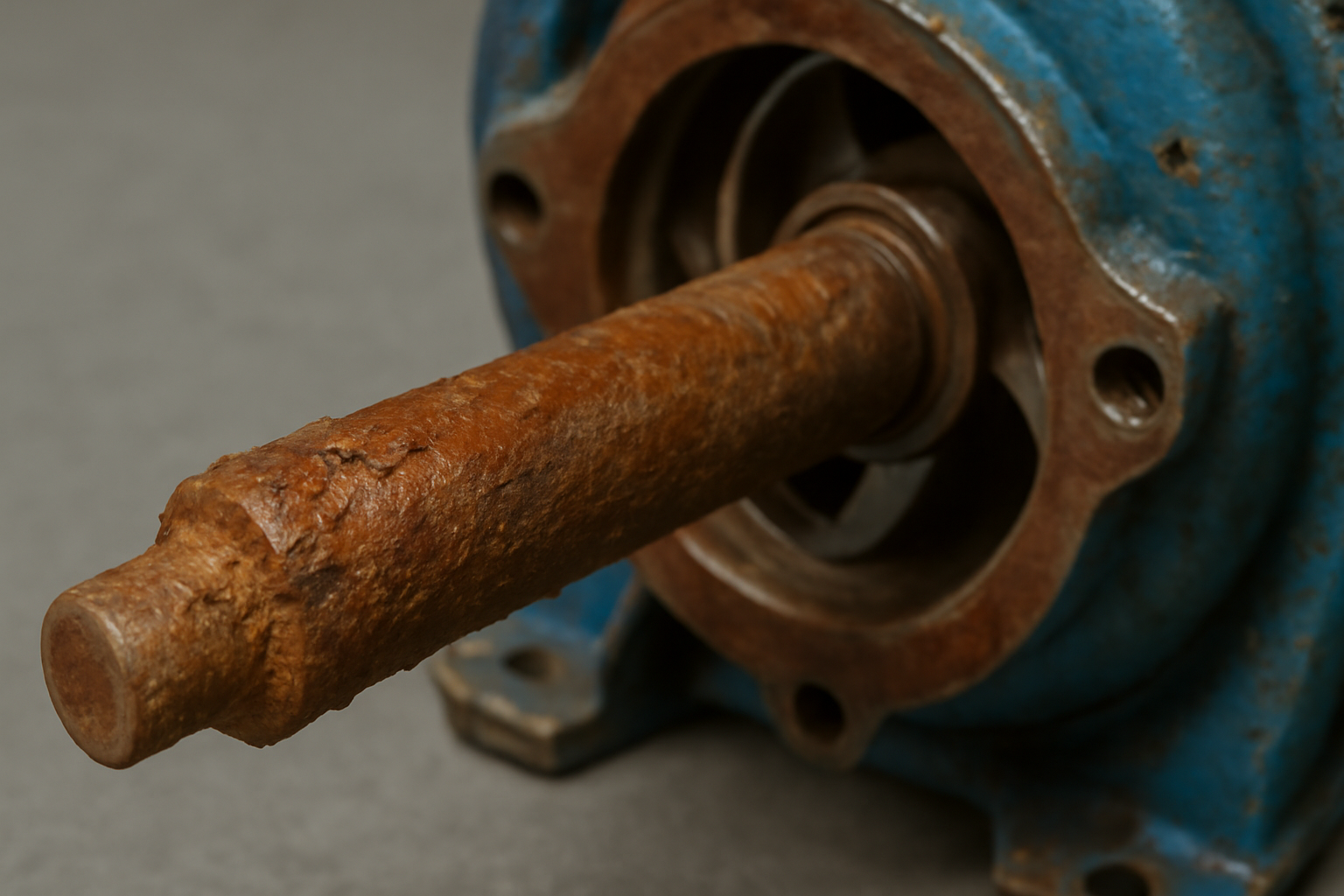
Corrosion is a major cause of shaft failure, particularly in environments where shafts are exposed to moisture, chemicals, or aggressive fluids. This degradation weakens the shaft material over time, making it prone to failure.
Example: In industries like oil & gas, shafts in offshore rigs are exposed to salty seawater and harsh chemicals, making them highly susceptible to corrosion, which can weaken the material and cause cracks to develop.
Prevention Recommendations:
- Material Selection: Use corrosion-resistant alloys such as 316 stainless steel, titanium, or nickel alloys.
- Protective Coatings: Apply epoxy coatings, ceramic coatings, or fluoropolymer coatings (PTFE) to protect the shaft.
- Routine Maintenance: Regularly inspect shafts for corrosion and clean them to prevent the buildup of corrosive agents. Use corrosion inhibitors where necessary.
4. Misalignment and Vibration-Induced Failures
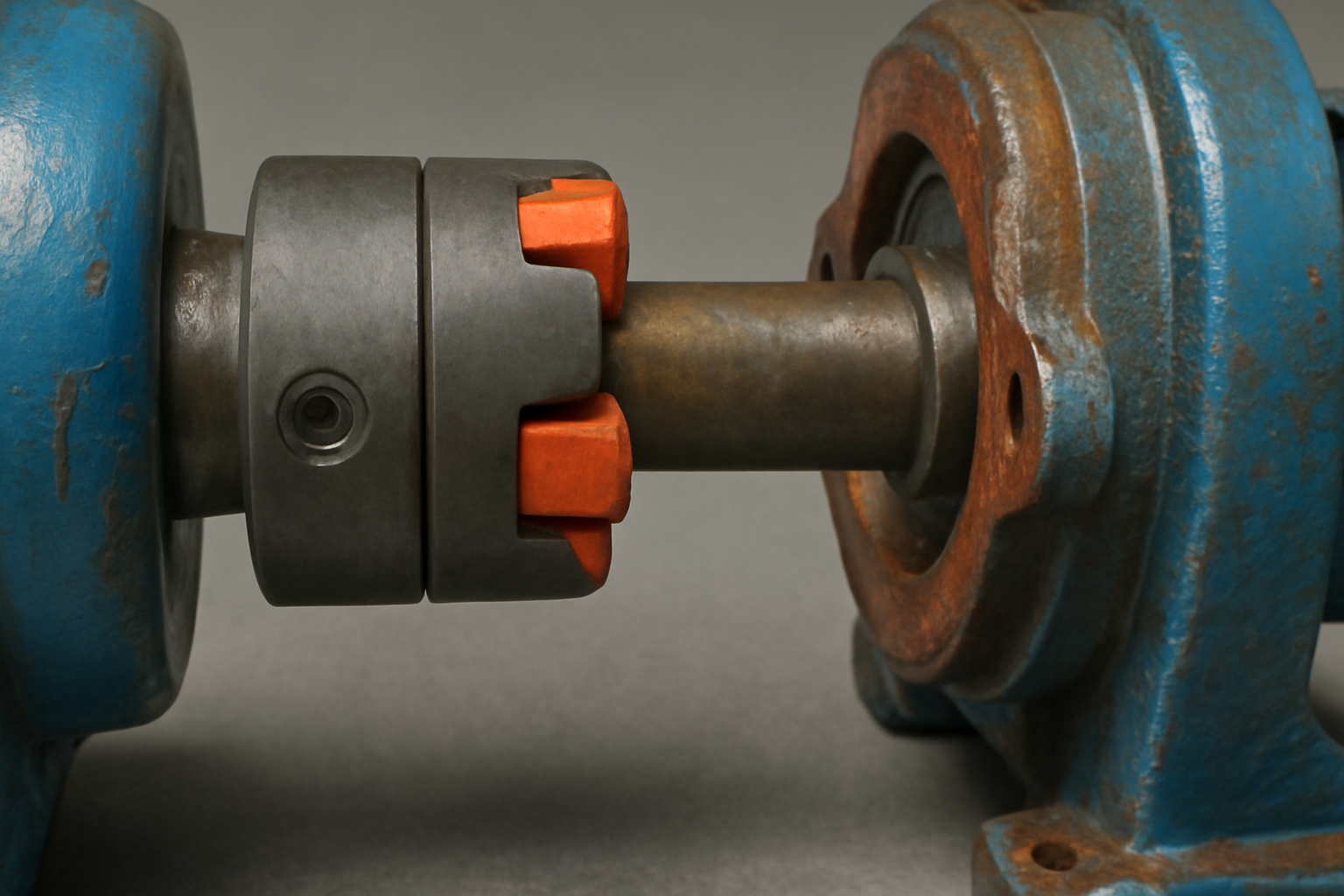
Misalignment of the shaft and connected components (such as bearings or couplings) can lead to uneven stresses that accelerate wear and tear.
Example: In textile manufacturing, shafts may experience misalignment due to improper installation or wear in connecting components, which can cause the shaft to vibrate excessively and eventually fail.
Prevention Recommendations:
- Shaft Alignment: Regularly perform laser alignment of shafts and connected components to ensure proper positioning.
- Vibration Monitoring: Install vibration sensors to detect abnormal vibrations and correct the issue before it escalates.
- Regular Maintenance: Perform routine maintenance, including bearing checks, coupling inspections, and lubrication.
5. Wear and Abrasion Failures
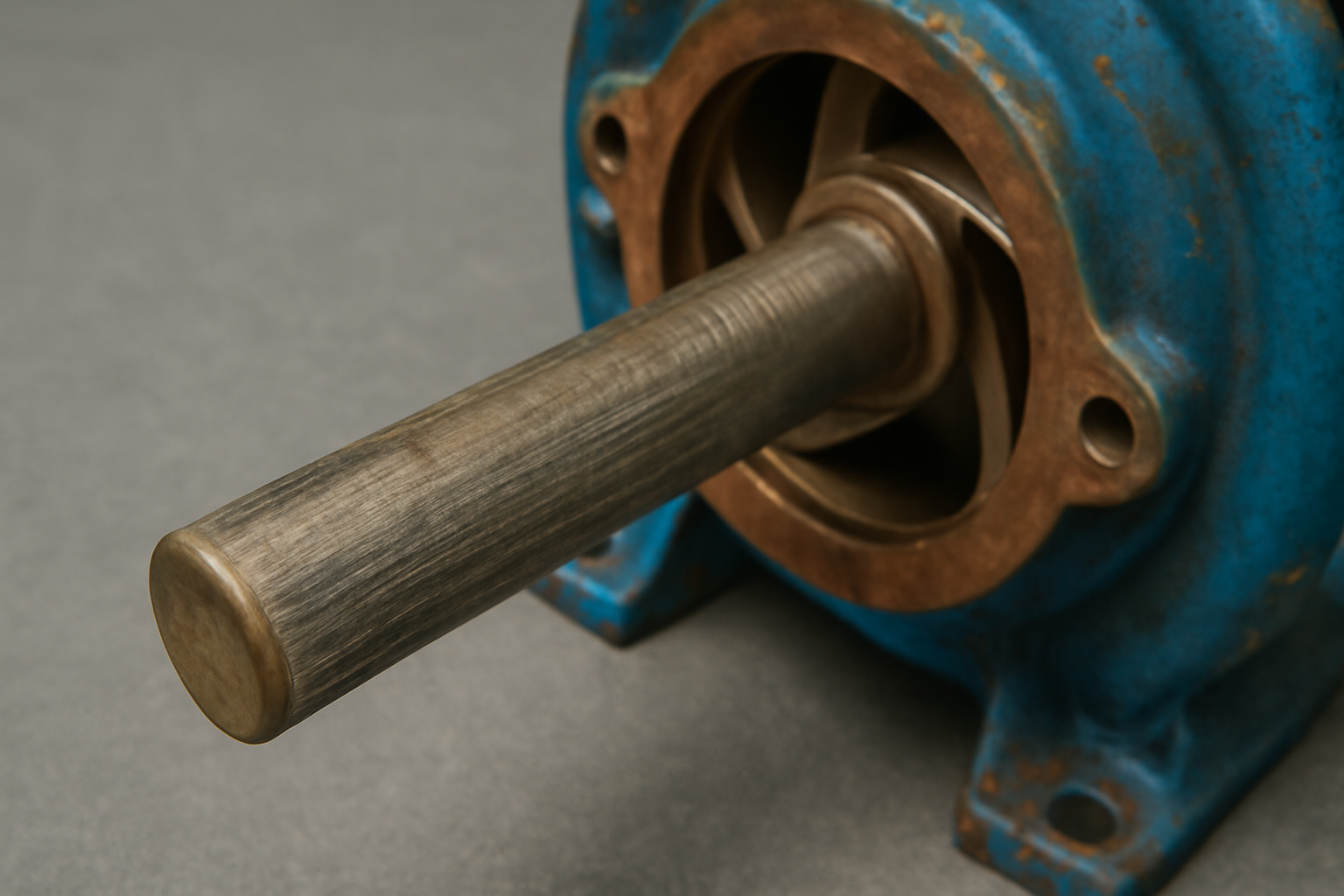
Wear and abrasion failures occur when continuous friction or exposure to abrasive materials gradually wears down the shaft surface. This is common in industries like pulp and paper, food processing, and mining, where the shaft is exposed to high loads or abrasive elements in the environment.
Example: In mining, shafts that handle heavy loads and abrasive particles can experience accelerated wear, reducing the shaft’s strength and leading to failure.
Prevention Recommendations:
- Lubrication: Use high-quality lubricants for appropriate temperature and load conditions to minimize friction.
- Material Selection: Use wear-resistant materials like carburized steel, chrome-plated shafts, or ceramic coatings.
- Filtration Systems: Install high-efficiency filtration systems to remove abrasive particles and prevent wear.
Once the common causes of shaft failures are identified, it’s crucial to implement effective design solutions that can prevent these issues and improve the overall reliability of the equipment.
Design Solutions to Prevent Shaft Failures and Improve Life
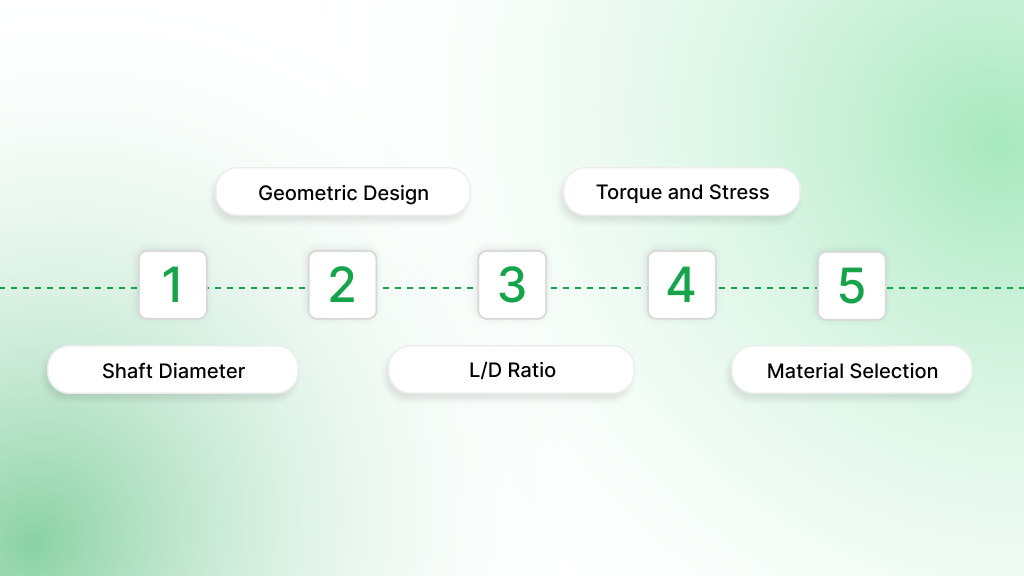
Ensuring the long-term reliability of shafts, particularly in pumps, requires a holistic approach that considers not only material selection but also key design parameters like torque, speed, stress, and the geometry of the shaft.
1 Shaft Diameter and Strength
One of the most critical factors in shaft design is the shaft diameter. Increasing the diameter can help distribute loads more evenly and prevent excessive deflection under stress, which can ultimately lead to shaft failure.
- Torque Capacity: The diameter of the shaft directly affects its torque transmission capacity. A larger diameter allows the shaft to handle greater torque without excessive bending. This is particularly important in pumps that operate under high load conditions or in applications where torque can fluctuate.
2 Role of Geometric Design Over Material Choice
While material selection is crucial, geometric design plays an equally important role in the performance and reliability of shafts. The geometry of a shaft, including its diameter, length, taper, and surface features, influences how stress is distributed along its length.
- Stress Concentration: Stress is often concentrated at areas where there are sharp corners, changes in diameter (steps), or keyways. To avoid premature failure, shafts should be designed with smooth transitions and fillet radii at these critical points.
- Load Distribution: Geometric features like tapering can be used to redistribute the load along the shaft, preventing overloading at any single point. This is particularly important in pump shafts that experience dynamic or fluctuating loads.
3 Understanding the L/D Ratio and Its Importance
The L/D ratio refers to the ratio of the length (L) of a shaft to its diameter (D). It is a critical factor in the design of shafts, especially in applications where bending or torsional stresses are present, such as in pumps.
- Bending Resistance: When a shaft is subjected to bending stresses (e.g., from an unbalanced load or external forces), its ability to resist deformation is inversely proportional to the L/D ratio.
A high L/D ratio (i.e., a long, thin shaft) will bend more easily under load than a short, thick shaft. Therefore, shorter shafts with larger diameters are preferred for high-torque, high-load applications like pumps, as they have better resistance to bending.
- Torsional Resistance: The L/D ratio also affects the shaft's torsional stiffness. A higher L/D ratio results in greater torsional deflection under load.
- Pump Applications: In pump shafts, it is essential to design the shaft with an optimal L/D ratio to prevent excessive bending or torsional stress that could lead to fatigue or failure. A typical pump shaft will have a lower L/D ratio to ensure that the shaft remains rigid and can effectively handle the required torque and bending forces.
4 Consideration of Torque, Speed, and Stress
When designing a shaft for a pump, understanding the relationship between torque, speed, and stress is crucial for ensuring its longevity and reliability.
- Torque: Torque is the rotational force transmitted through the shaft. A larger diameter shaft can better handle higher torque, preventing shear stress and failure. It's essential to factor in pump conditions, such as fluid viscosity, speed, and pressure, to choose the right material and diameter for the shaft.
- Speed: Higher shaft speeds increase centrifugal forces and wear. A smooth surface finish reduces friction and wear, and the shaft must be designed to minimize vibrations and torsional deflection. Proper balancing is key to maintaining smooth operation and avoiding failures at high speeds.
- Stress: The shaft must withstand bending, torsional, and shear stresses. Cyclic stresses from repeated start-ups and steady operational loads can cause material fatigue. Optimizing shaft geometry, selecting the right material, and ensuring proper lubrication can help mitigate stress-induced failures.
5 Material Selection and Surface Treatment
The shaft material must be able to withstand the operating conditions, including mechanical stresses, temperature variations, and environmental factors such as corrosion or abrasion. For pumps, the following materials are commonly used:
- Alloy Steel: For shafts subjected to high torque and cyclic loading, alloy steels such as 4140 steel or 4340 steel offer excellent fatigue resistance and tensile strength.
- Stainless Steel: For applications where corrosion resistance is critical (e.g., water treatment or pharmaceutical pumps), 316 stainless steel provides excellent corrosion resistance while maintaining good strength and ductility.
- Titanium: In environments where extremely high corrosion resistance is needed (e.g., offshore oil & gas operations), titanium alloys are used for their strength-to-weight ratio and resistance to harsh chemicals and saltwater.
- Coatings: Ceramic coatings or hard chrome plating can be applied to improve surface hardness, reduce wear, and enhance the corrosion resistance of the shaft.
With design and material strategies in place to protect shafts, let's dive into how the stiffness of the material, specifically Young’s Modulus, can make all the difference when it comes to keeping shafts strong and reliable under pressure.
Young’s Modulus and Its Impact on Pump Shaft Failures
Young's Modulus is a material property that measures the stiffness of a material. It shows how much a material will deform under stress. A material with a high Young's Modulus will resist deformation, while a material with a low modulus will deform more easily. Essentially, it tells you how "stiff" or "flexible" a material is when force is applied.
E= εσ =ΔL/LF/A
Where:
- σ\sigmaσ = Tensile stress (force per unit area)
- ε\varepsilonε = Tensile strain (deformation relative to original length)
- FFF = Force applied
- AAA = Cross-sectional area of the material
- ΔL\Delta LΔL = Change in length
- LLL = Original length of the material
Impact on Pump Shaft Failure
In pump shafts, Young's Modulus plays a key role in how the shaft handles stresses like bending and twisting. Materials with a high Young's Modulus, such as alloy steels, resist deformation better and are less likely to bend or twist under the forces they experience. This reduces the risk of failure due to bending or fatigue.
- High Modulus: The shaft is stiffer, handles load better, and is less likely to deform, preventing failures like bending, misalignment, or fatigue cracks.
- Low Modulus: The shaft will bend more easily, increasing the risk of misalignment, excessive vibration, and premature failure.
When selecting materials for pump shafts, a high Young's Modulus is often preferred to ensure the shaft maintains its shape and strength, especially in high-stress applications.
Case Study: Failure Analysis of Water Pump Shaft
A vertical centrifugal pump shaft failed while being used for utility water raw material processing. The failure, which resulted in the shaft breaking into two parts, was caused by a combination of foreign debris, improper maintenance, and material issues.
Incident Details
- Failure Discovery: During routine inspection, it was found that the pump shaft had broken nearly halfway. Foreign particles, including sand and a bolt, were found in the pump chamber between the bearing and shaft, contributing to the failure.
- Maintenance Oversight: The shaft had been reused without inspection after an operational disconnection, which led to a lack of proper assessment of the shaft's condition.
Key Findings
- Material Analysis: The shaft material was identified as AISI SS 304, not the specified AISI SS 316. However, both materials have similar tensile strengths, so the material substitution was not a major factor in the failure.
- Root Cause: Foreign materials, including sand and a bolt, caused the shaft to seize, increasing the tensile stress beyond its ultimate strength. This overstress initiated cracks that propagated, eventually causing the shaft to fracture.
- Contributing Factors:
- Wear at Bearing Location: Wear at the bearing reduced the shaft's cross-sectional area, creating stress concentrations.
- Cyclic Loading: The shaft underwent continuous cyclic flexural and torsional stresses, which led to fatigue crack growth over time.
- Visual Inspection & Failure Mode: The fracture surface was perpendicular to the shaft axis, indicating fatigue crack propagation. Cracks were initiated under high rotational stress, with stress concentrations at wear areas and foreign debris-induced blockage.
- Vibrational Stress: The presence of foreign materials like bolts generated vibration, which contributed to shaft misalignment and increased vibrational stress, accelerating the failure process.
Conclusion
This case highlights the importance of:
- Regular Inspections: Reused shafts must undergo thorough checks before reinstallation to avoid undetected damage or wear.
- Prevention of Foreign Material Ingress: Foreign materials like sand or bolts must be controlled to prevent blockage and stress buildup.
- Material Compliance: Ensure that the correct material specifications are followed, although material substitutions in this case did not directly cause failure.
- Cyclic Stress Management: Understanding the impact of cyclic loading on shafts and designing for stress relief is critical to preventing fatigue-induced fractures.
After reviewing the case study and understanding how these failures occur in real-world scenarios, it’s important to see how Chemitek’s advanced pump solutions can help prevent such issues and improve overall reliability.
Preventing Shaft Failures with Chemitek's Advanced Pump Solutions
In industries such as chemical processing, pharmaceuticals, and water treatment, shaft failures can result in substantial downtime and high repair costs. Chemitek addresses this concern by providing custom-engineered centrifugal pumps for handling corrosive, abrasive, toxic, and high-temperature fluids used in industrial applications.
Superior Materials for Reliable Pumps
- Metallic Pumps: Chemitek's 316 stainless steel and duplex stainless steel pumps are highly resistant to corrosion and high stress, ensuring that components remain robust even under demanding conditions. These materials directly mitigate issues like corrosion-induced shaft failures.
- Non-Metallic Pumps: Crafted from FRP, PVC, and PVDF, Chemitek's non-metallic pumps offer excellent corrosion resistance and are ideal for chemical handling, reducing risks associated with abrasion and wear failures.
By selecting the right materials and focusing on optimised designs, we ensure that our pumps withstand cyclic loads and prevent common failure causes, including fatigue and overload.
Chemitek's pumps are designed to resist stress concentrations and corrosion, directly addressing the key challenges that lead to shaft failures in various industries.
Conclusion
Shaft failures can result in costly downtime and safety hazards across various industries. Understanding the causes, such as fatigue, overload, corrosion, misalignment, and wear, is crucial for minimizing the risk of failure and optimizing machinery performance. By focusing on material selection, proper design, and proactive maintenance, industries can significantly improve the reliability and longevity of their equipment.
To ensure your pumps remain operational and efficient, choosing high-quality, engineered solutions is key. Chemitek offers precision-engineered pumps designed to withstand the toughest conditions and prevent common shaft failures. Their advanced materials and innovative designs ensure reliability and durability in demanding industrial environments.
For more information on how Chemitek’s engineered pumps can help improve your operations, reduce downtime, and prevent shaft failures, contact us today!
FAQs
1. How can shaft misalignment lead to failure?
Misalignment creates uneven loading and stress concentrations, which can accelerate wear at specific points on the shaft, especially at bearings. Over time, this can lead to cracks and ultimately shaft failure. Regular alignment checks and adjustments are critical to preventing this type of failure.
2. What materials are best suited for preventing shaft failures in high-stress applications?
For high-stress applications, alloy steels (e.g., 4140 steel) and stainless steel (e.g., 316 stainless steel) are recommended due to their high tensile strength and fatigue resistance. These materials are particularly useful in environments subjected to repeated cyclic loads or corrosive conditions.
3. What preventive measures can be taken to avoid overload-related shaft failures?
To prevent overload failures, it is important to monitor applied loads using torque meters or load cells. Safety clutches or torque limiters can be installed to protect the shaft from excessive torque. Additionally, using high-tensile strength materials and designing shafts with increased diameters in critical areas can help distribute loads more evenly and prevent overload failures.
4. How does corrosion contribute to shaft failure, and how can it be prevented?
Corrosion occurs when shafts are exposed to moisture, chemicals, or aggressive fluids, weakening the material over time. This can lead to cracks or surface degradation. To prevent corrosion, using corrosion-resistant materials (e.g., 316 stainless steel, titanium, or nickel alloys) and applying protective coatings (such as epoxy coatings or fluoropolymer coatings) are effective solutions.
5. What is the importance of vibration monitoring in preventing shaft failures?
Vibration monitoring helps detect any abnormal vibrations in the shaft, which may indicate issues such as misalignment, imbalance, or wear and tear. By identifying these problems early, adjustments can be made to prevent further damage and avoid shaft failure. Regular vibration analysis is a proactive way to maintain equipment integrity.
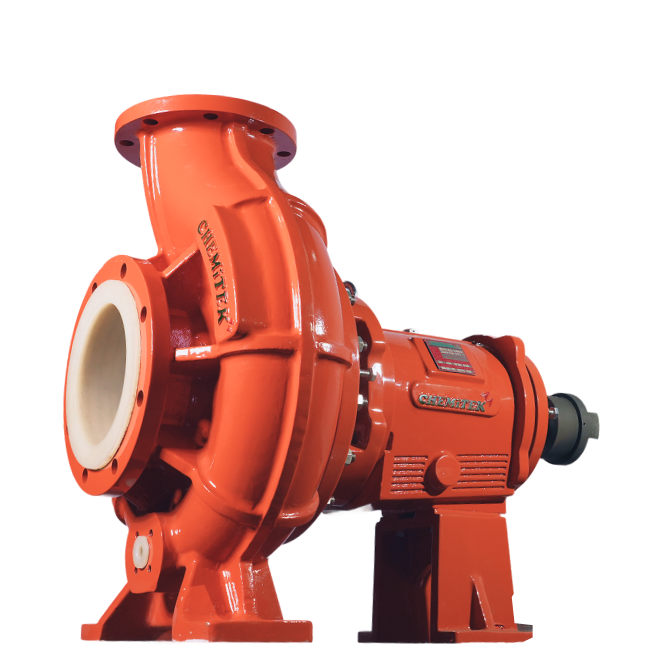
Latest posts
Ready to Upgrade Your Process Operations?
